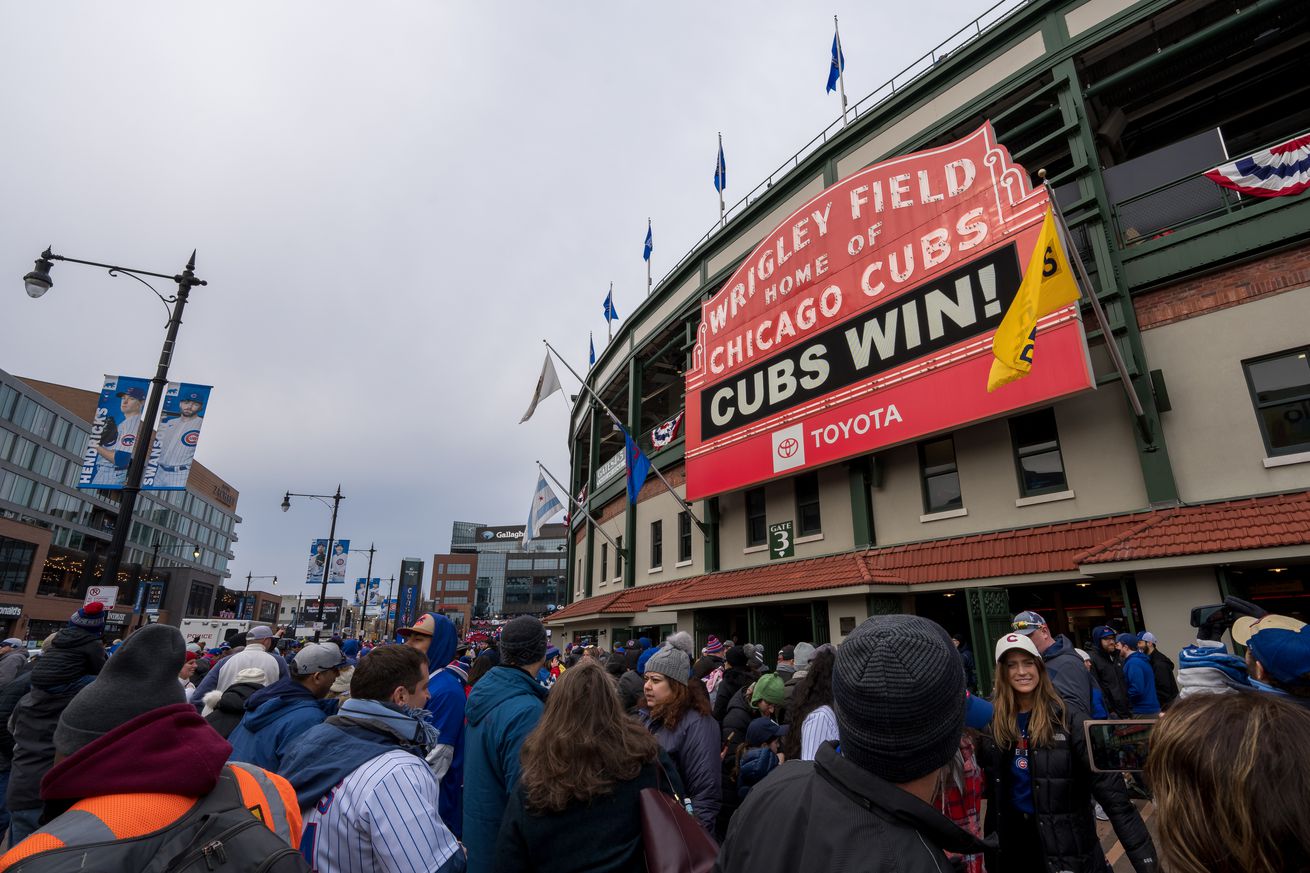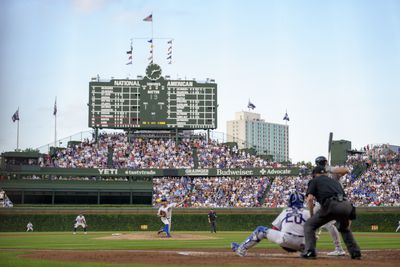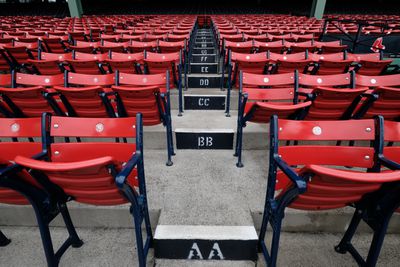
This will ruffle some feathers.
Looking to check baseball’s second most iconic ballpark off of our bucket list, my father and I boarded a flight to Chicago, Illinois, on Saturday morning. After landing at O’Hare International, we hopped off the flight and jumped in an Uber to, you guessed it, the magnificent Rate Field nestled in the Windy City’s Southside.
Just kidding, it was Wrigley Field. We went to Wrigley Field.
Saturday night’s Cubs–Red Sox game certainly wasn’t one to remember as a Sox fan, but that was okay, as I spent most of my time that evening marveling at the jewel box I was sitting in. From the moment I scanned my ticket and walked into the concourse under that magnificent red marquee, I was completely in awe of Wrigley Field.

Photo by Matt Dirksen/Chicago Cubs/Getty Images
Around the 4th inning of Shota Imanaga shoving against my Sox, I built up the courage and leaned over to my Dad.
“I think I like this more than Fenway” I whispered.
He looked back at me. “I’m glad you said that because I think I agree”.
The two of us then began rattling off things we found Wrigley did better than Fenway. The brick-laid concourses, the wide tunnels, the somehow waaaay more efficient concession lines. But to the two of us, one aspect of Wrigley stood above all: the seating. Every seat in the park, from the obstructed views to the field box to the 400s, was wide enough and had enough leg room to be completely comfortable for two ~250-pound men. Now, I know this may be hard to believe for frequent patrons of Fenway Park, but Wrigley Field found a way.
It is mind-blowing what the complete seat-gutting and replacement did for baseball’s second-oldest ballpark. Beyond just the comfort and roominess of the seats, the gutting allowed the seats to actually be oriented the correct way! If you’re sitting down the first base-line in right field, you’ll still be facing home plate. Baffling, I know.

Photo by Ian Johnson/Icon Sportswire via Getty Images
I suppose what I’m mostly getting at here is: Fenway Park can be so much better. Before I visited Wrigley Field, I had assumed that modernizing parts of Fenway would diminish the “classic” feel of the place. I’d visit parks like San Francisco’s Oracle or Seattle’s T-Mobile and think: “Well, this is nice, and I like being able to face home plate without cranking my neck to the left, but I wouldn’t want Fenway to ruin their charm”.
Charm. Fenway’s “quirks” have been sold to the masses as part of the park’s “charm”. But when I sat in my comfy Wrigley Field seat and walked the lovely Wrigley Field concourses, I didn’t feel like the park had any less charm. Quite the opposite, in fact! The updated amenities allowed me to take in everything Wrigley had to offer without being annoyed by what it didn’t.
I get that it’s sacrilegious to suggest that Fenway Park could be better. I do. But with all the effort that FSG put into modernizing the park throughout the last two decades, why not go a little further? Attending a game at Fenway Park isn’t similar at all to how it was in 1912. There are three massive video boards, luxury boxes, and TVs in the front row. And that’s okay! We can make some jumps to the 21st century. Nobody, and I do mean nobody, would kick up a fuss if the wooden grandstands were kissed goodbye.
Wrigley Field is a park that has stepped into the modern day while maintaining most of, if not all of its early 20th century charm. I hope (and pray) that Fenway Park will one day say the same.